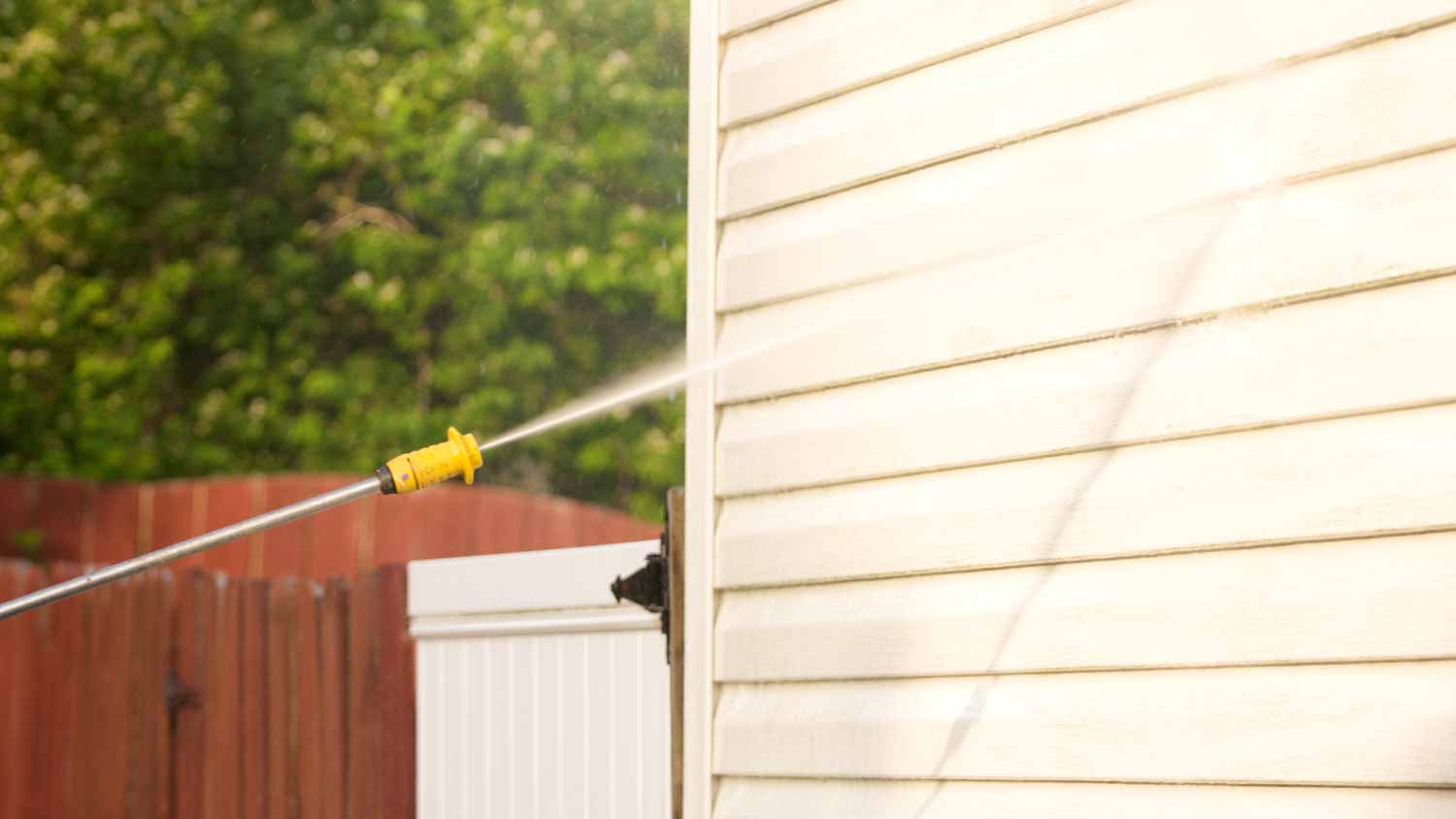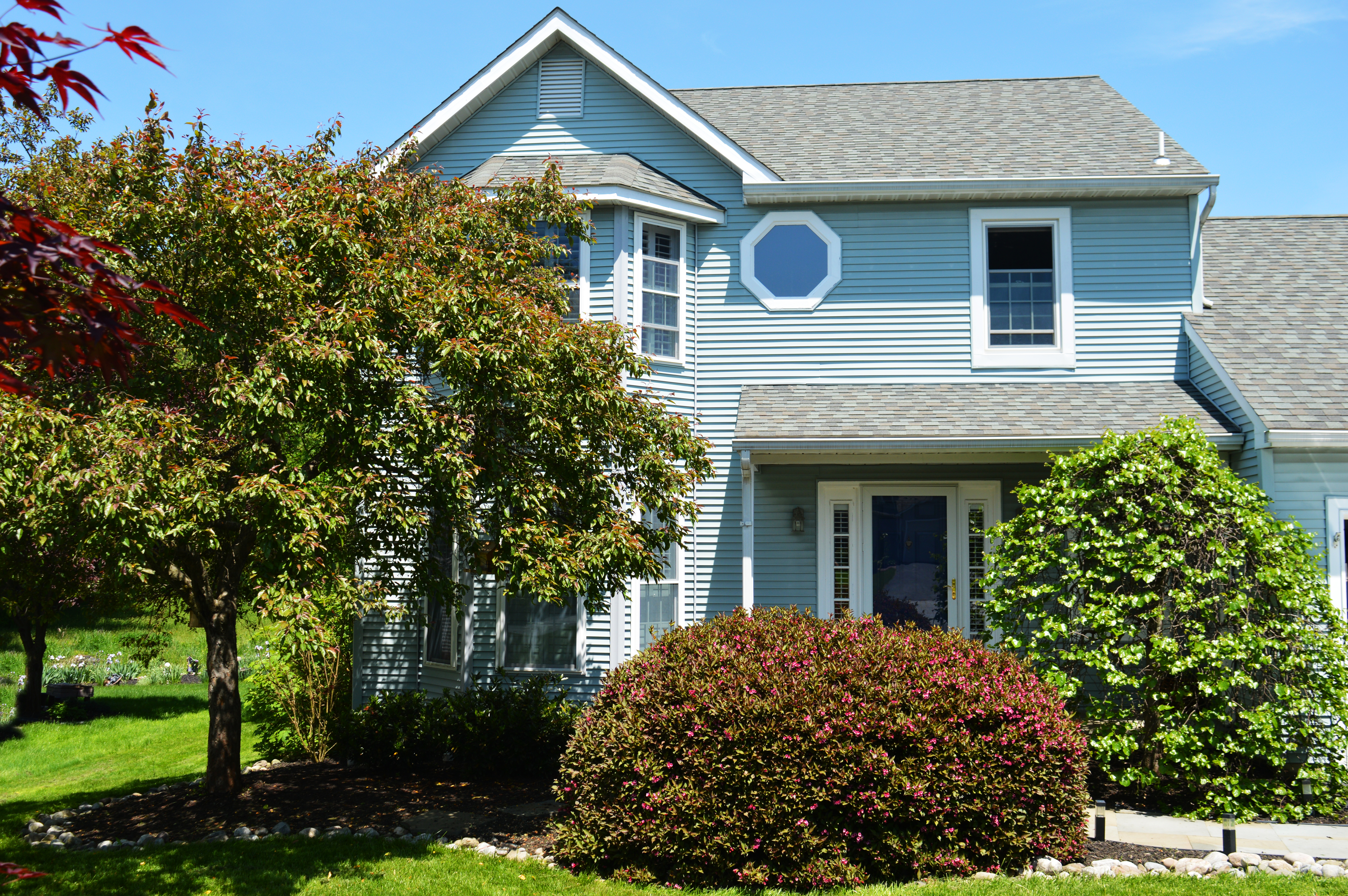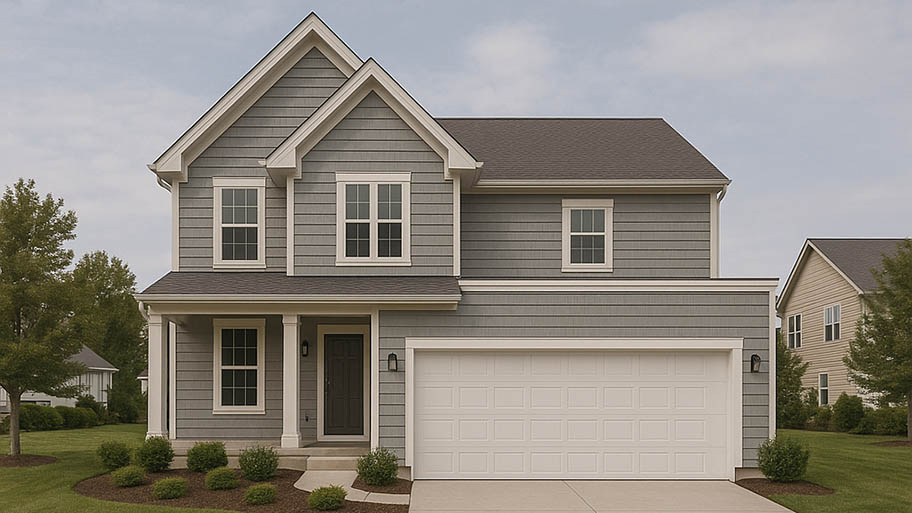
Aluminum siding costs between $4,500 and $19,000 on average, depending on the style, square footage, and local labor rates. Keep reading to estimate your budget.
It’s not always a good idea to power through your siding maintenance


Power washing can damage siding if done incorrectly.
Power washing uses heated water and cleaning agents while pressure washing relies on water pressure alone.
Soft washing uses low pressure and detergents to safely clean delicate siding.
Hiring a siding professional ensures effective cleaning and reduces the risk of costly damage.
When caked-on dirt and grime are causing your home’s exterior to lose its luster, you might consider a power wash to blast through the mess and get it back to its former glory. But can a power wash break siding? And what are the alternatives? Let’s dive into the different options and how to choose the best method of your siding maintenance.
Yes, power washing can damage many types of siding if it’s not done properly. Pressure washers can generate upwards of 3,300 psi (pounds per square inch) or even more. While this is certainly powerful enough to remove years of dirt and grime, it can also blast holes, take off paint, and cause other serious damage in the process. This is one of the many reasons to hire a professional for pressure washing and power washing your home.
Power washing and pressure washing are two commonly confused cleaning methods, but they differ in their approach and applications. While both use high-pressure water to clean surfaces, power washers use heated water and cleaning agents, while pressure washers rely on water pressure alone to blast off buildup.
In both cases, these can safely clean hard surfaces like concrete, as well as hard siding materials like brick or stone. However, when it comes to more fragile siding materials, such as vinyl and wood, a high-pressure blast could do more harm than good.
While it can sometimes be an effective solution for washing your home’s siding, these common pressure washing mistakes can lead to damage:
Excess water build-up: Too much pressure can force water underneath siding panels, leading to moisture buildup in your walls, attic, or floors. Over time, this can cause mold, mildew, and even structural damage.
Paint removal: High-pressure water can strip paint off your siding, leaving your home looking worse than before.
Dispersal of lead-based paint: For older homes with lead-based paint, pressure washing can scatter toxic paint chips across your property, posing health risks to your family and neighbors.
Damage to windows and fixtures: A powerful spray can accidentally hit windows, screens, or surrounding fixtures, causing cracks, tears, or other damage.
If you’re considering a DIY approach to power washing and pressure washing, there is potential for success, but the risk of user error is high. The information can feel overwhelming, from shopping for a power washer and choosing between a gas-powered versus an electric pressure washer, to selecting the right psi settings and avoiding collateral damage to siding and windows.
If you’re not 100% confident you have the skills to employ the proper techniques and select the right settings to safely clean your siding, a local siding repair contractor can help you restore the look of your home’s siding without the risk of damage.

Learning how to use a pressure washer or a power washer properly is key to cleaning your siding without collateral damage. If you’re determined to tackle power washing or pressure washing on your own, follow these tips to reduce the risk of damage:
Use a low-pressure setting for vinyl or wood siding, typically around 1,300 to 1,600 psi.
Always test the pressure on an inconspicuous area before starting.
Maintain a distance of at least six feet from the surface to prevent water from penetrating beneath the siding.
Angle the spray downward to avoid forcing water into gaps or seams.
Avoid hitting windows, screens, or delicate fixtures directly.
If you’re stuck in the dilemma of whether it’s a good idea to pressure wash siding, consider soft washing as a safer alternative. Soft washing uses significantly lower water pressure, reducing the risk of damage while still effectively cleaning surfaces. This option is especially useful for cleaning more delicate materials, such as vinyl siding or asphalt shingles.
Soft washing uses a blend of water and cleaning detergents to remove dirt, algae, and mold. This method minimizes the risks associated with high-pressure washing by relying more on cleaning agents to loosen grime rather than sheer (and potentially damaging) force. However, even soft washing isn’t entirely risk-free—older or already compromised siding may still experience water penetration if cracks or gaps are present. So, it’s always a good idea to invest in professional siding services to avoid potentially catastrophic damage.
From average costs to expert advice, get all the answers you need to get your job done.

Aluminum siding costs between $4,500 and $19,000 on average, depending on the style, square footage, and local labor rates. Keep reading to estimate your budget.

Thinking about replacing your siding? Our shou sugi ban siding cost guide will help you determine if this Japanese wood siding is within your budget.

Discover the cost to install exterior trim. Learn about price factors, labor, materials, and ways to save on your exterior trim installation project.

From clapboard to shiplap, there are tons of wood siding types for you to choose from. Here’s a run-down of the ten most popular types of wood siding.

Can you put siding over brick? In many cases, yes. Our guide walks you through when and how—and when you shouldn’t.

Your home's siding is the first line of defense against the elements. Decide whether stucco or wood siding is best for you by comparing the two.